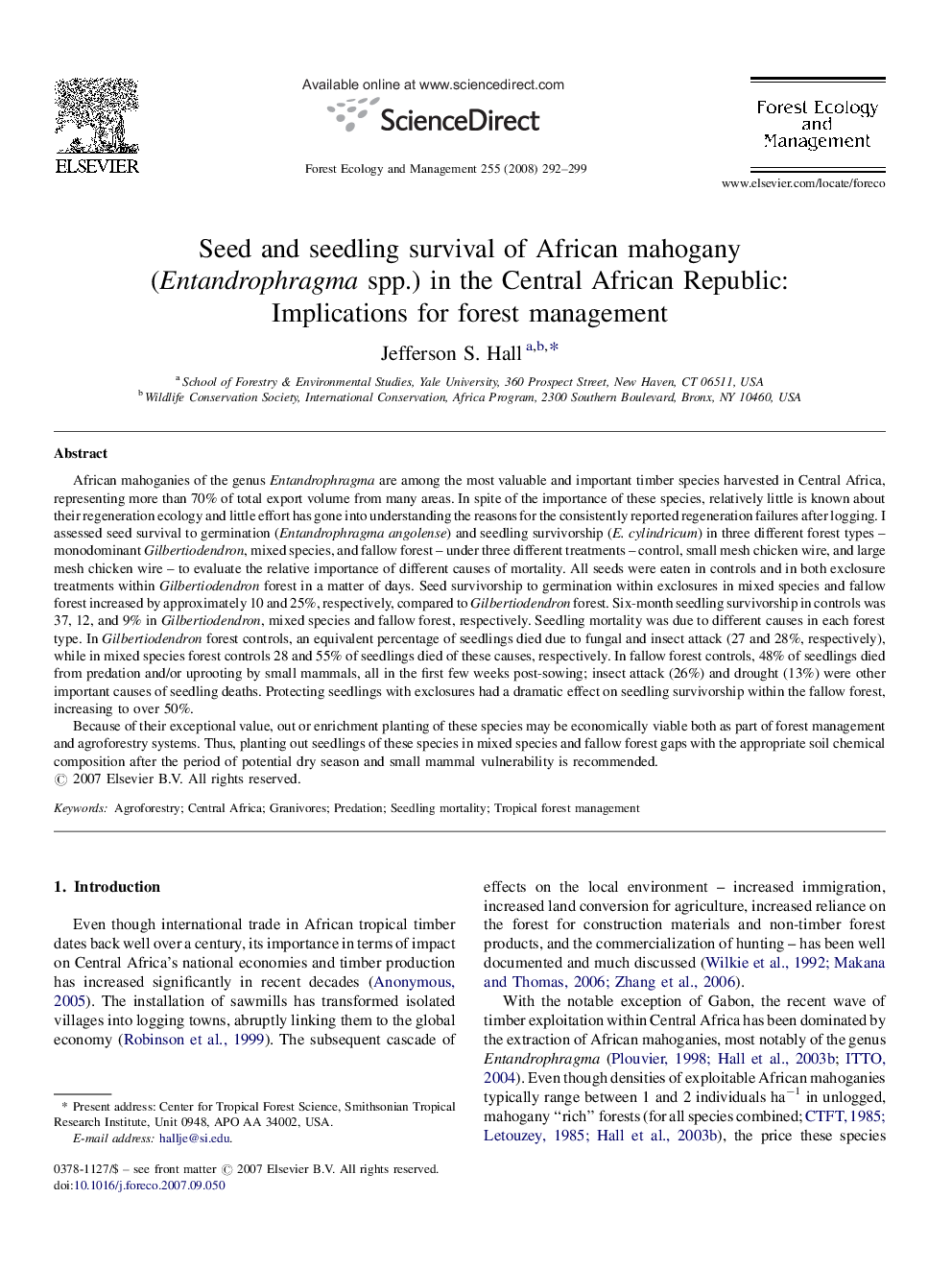| کد مقاله | کد نشریه | سال انتشار | مقاله انگلیسی | نسخه تمام متن |
|---|---|---|---|---|
| 89778 | 159356 | 2008 | 8 صفحه PDF | دانلود رایگان |

African mahoganies of the genus Entandrophragma are among the most valuable and important timber species harvested in Central Africa, representing more than 70% of total export volume from many areas. In spite of the importance of these species, relatively little is known about their regeneration ecology and little effort has gone into understanding the reasons for the consistently reported regeneration failures after logging. I assessed seed survival to germination (Entandrophragma angolense) and seedling survivorship (E. cylindricum) in three different forest types – monodominant Gilbertiodendron, mixed species, and fallow forest – under three different treatments – control, small mesh chicken wire, and large mesh chicken wire – to evaluate the relative importance of different causes of mortality. All seeds were eaten in controls and in both exclosure treatments within Gilbertiodendron forest in a matter of days. Seed survivorship to germination within exclosures in mixed species and fallow forest increased by approximately 10 and 25%, respectively, compared to Gilbertiodendron forest. Six-month seedling survivorship in controls was 37, 12, and 9% in Gilbertiodendron, mixed species and fallow forest, respectively. Seedling mortality was due to different causes in each forest type. In Gilbertiodendron forest controls, an equivalent percentage of seedlings died due to fungal and insect attack (27 and 28%, respectively), while in mixed species forest controls 28 and 55% of seedlings died of these causes, respectively. In fallow forest controls, 48% of seedlings died from predation and/or uprooting by small mammals, all in the first few weeks post-sowing; insect attack (26%) and drought (13%) were other important causes of seedling deaths. Protecting seedlings with exclosures had a dramatic effect on seedling survivorship within the fallow forest, increasing to over 50%.Because of their exceptional value, out or enrichment planting of these species may be economically viable both as part of forest management and agroforestry systems. Thus, planting out seedlings of these species in mixed species and fallow forest gaps with the appropriate soil chemical composition after the period of potential dry season and small mammal vulnerability is recommended.
Journal: Forest Ecology and Management - Volume 255, Issue 2, 10 March 2008, Pages 292–299